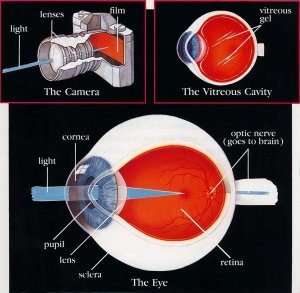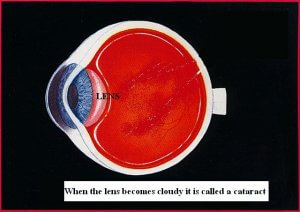Patients2
Our patient information is created by our doctors, designed to explain different treatments and provide patients with information on eye care and eye surgery in Cyprus. Please take time viewing the pamphlets and contact one of our friendly staff for more information
What is a cataract and how is it removed
The eye is like a camera. When you take a picture, the lens in the front of the camera allows light through and focuses that light on the film that covers the back inside wall of the camera. When the light hits the film, a picture is taken.

The eye works in much the same way. The front parts of the eye (the cornea, pupil, and lens) are clear and allow light to pass through. The light is focused by the cornea and the lens onto a thin layer of tissue called the retina, which covers the back inside wall of the eye. The retina is like the film in a camera. It is the seeing tissue of the eye. When the focused light hits the retina, a picture is taken. Messages about this picture are sent to the brain through the optic nerve. This is how we see.
When the lens of the eye becomes cloudy or opaque it no longer allows light to enter the eye and the vision deteriorates. An opaque or cloudy lens is called a cataract. This is what needs to be removed and replaced in order to restore vision

Instructions for
Cataract surgery under local anaesthetic
Your cataract will be removed completely painless using the technology of laser (FLACS-Femtosecond Laser Assisted Cataract Surgery with use of LenSx-ALCON) and ultrasound (Phacoemulsification with Centurion-ALCON) to liquefy and aspirate the cataract. A foldable lens implant is then inserted into the eye and usually sutures are not required.
You will be able to go home immediately after the operation is completed.
It is very important therefore to follow your postoperative instructions carefully.
- On the day of surgery have a light breakfast and if you have been prescribed drops to use prior to surgery do so as instructed.
- You can come dressed in your normal clothing. There is no need to bring any nightclothes with you. You will be taken to the operating theatre by the nursing staff when its time for your surgery, this is usually between 1 to 3 hours after your arrival depending on the preparation time necessary and how busy the theatre timetable is on that day.
- In the operating theatre you will receive some local anaesthetic drops 15 to 20 minutes before your surgery. Usually an injectable local anaesthetic is not necessary, if it is this will be explained to you. During the operation you will be wide-awake and you will be able to hear everything but you will not see or feel any part of the operation. You will be able to talk to the surgeon at any time and tell him if you have a problem. At the end of the procedure your eye will be closed with an eye pad and you will go home.
- During your first evening after the surgery feel free to do as you please as long as you keep your eye pad dry and intact. If you develop a headache you can take your normal pain relief that you would use at any other time.
- The following day you will need to attend for a post operative visit as instructed and have your eye pad removed. Your eye will remain open from then on. You will have good vision from day one but will continue to improve for about one month. You will then be examined again and told if you need to go to your optician for new glasses.